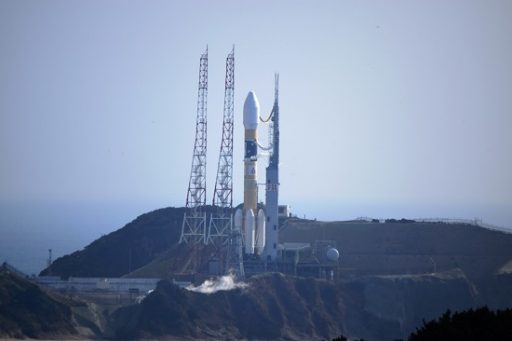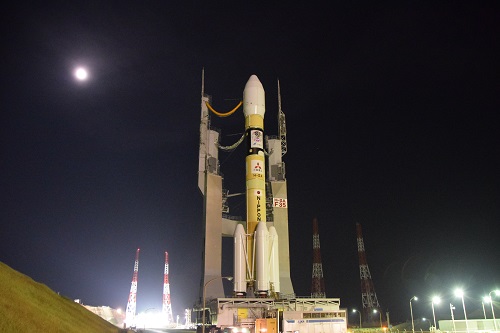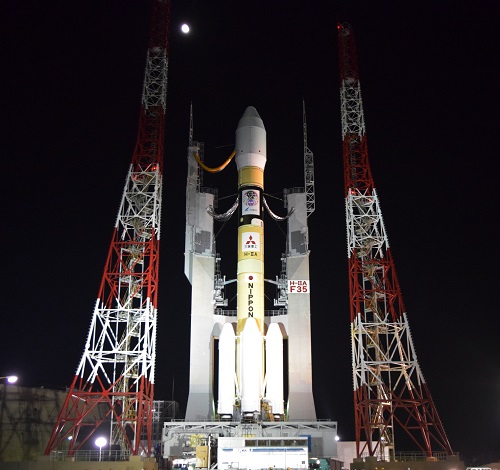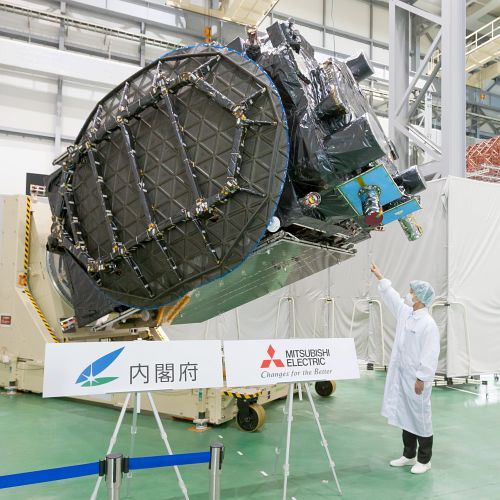Technical Issues Scrub H-IIA Launch with QZS-3 Satellite

The launch of Japan’s H-IIA rocket with the third Quasi-Zenith Satellite had to be scrubbed deep into the countdown on Saturday due to a potential issue with the launcher’s propulsion system. The Japan Aerospace Exploration Agency will announce a new launch date once corrective measures have been identified to deal with the problem and eliminate any technical concerns.
Saturday’s countdown had been running smoothly following a midnight hour rollout of the 53-meter tall H-IIA rocket that set the stage for several hours of preparations to hook the vehicle up to ground facilities and complete initial power-up and checkout operations before pressing into propellant loading. Launch Operator Mitsubishi Heavy announced at 19:30 UTC on Friday (4:30 a.m. JST) that terminal countdown operations were started after clean status checks with launch vehicle and ground system teams as well as downrange tracking assets.

H-IIA entered propellant loading operations at around X-7 hours to receive some 120 metric tons of Liquid Hydrogen and Liquid Oxygen, reaching replenish at 23:19 UTC to begin the next phase of the countdown that comprised complex tests of the launch vehicle to gear up for the start of the X-60-minute terminal count to set up for liftoff. However, prior to the status check, teams decided to hold the clock due to a potential issue with the rocket’s propulsion system.
The QZS-3 mission has the luxury of an exceptionally long launch window, eight hours and 34 minutes in Saturday’s case – providing plenty of time for troubleshooting. H-IIA remained in propellant replenish while additional assessments were conducted, heading deep into the day’s window that opened at 4:40 UTC. A scrub was officially called at 6:50 UTC after assessments determined launch would not be possible within the day’s window. No further characterization of the propulsion system problem was made and JAXA said a new launch date would be announced as soon as it is determined.

The launch of QZS-3 had been delayed earlier in the week from a Friday target to Saturday due to weather considerations. Weather is expected to remain favorable throughout Saturday and Sunday, then worsen for the first half of the week with cloud cover and rain forecast for H-IIA’s sea-side launch pad.
QZS-3 is the second of three Quasi-Zenith Satellites headed into orbit this year to establish the fully-operational QZSS constellation comprising one craft in Geostationary Orbit and three satellites in specialized Tundra orbits, optimized for high elevation angles over the Japanese Islands. As the sole GEO member of the constellation, QZS-3 is the heaviest of the group, weighing in at 4,700 Kilograms and requiring H-IIA to fly in its most-powerful configuration with four boosters clustered around the rocket’s first stage.
QZSS takes a unique spot in the satellite spectrum in that it is designed to augment another satellite constellation but moves beyond acting as a bent-pipe relay of ground-generated augmentation signals and in-fact delivers navigation signals of its own. The QZSS constellation will also be capable of augmentation for the European Galileo navigation constellation that will become operational before the end of the decade. QZSS itself will be fully operational by mid-2018 and JAXA plans to add another three satellites in the 2020s to further increase GPS availability in Japan’s urban canyons.

The QZSS satellites are designed to deliver two types of signals – GPS-compatible navigation signals and GPS augmentation messages that can be used by ground receivers to more accurately calculate user position. Through the GPS-compatible messages in the L1, L2 and L5 bands, the QZSS satellite can be treated as an additional member of the GPS constellation at high elevation angle from all locations in Japan, increasing availability of GPS.
The GPS augmentation approach followed by QZSS is similar to that of the U.S. Wide Area Augmentation System in that a number of ground stations monitor variability in GPS signals – caused by clock errors and ionospheric delay – and provide correction messages to a high-altitude satellite that immediately relays them to augmentation-enabled receivers on the ground to increase location accuracy to around one meter.
The first QZS satellite served as a pathfinder and underwent extensive signal characterization and fine tuning before being moved into active service nine months after launch. Studies showed that GPS accuracy was improved by a factor of 2.5 when QZS-1 was overhead and transmitting augmentation code. These results prompted JAXA to order three DS-2000-based satellites from manufacturer Mitsubishi Electric in 2013 for a total of $526 million to establish the QZSS constellation for 24/7 augmentation services, also expanding from an initial three-satellite design to a four-satellite constellation with one craft in Geostationary Orbit to broaden the accuracy augmentation zone to the entire Asia-Pacific Region.

